Canada Put Amazon in Charge of Handling COVID-19 Medical Supplies. Workers Say They’re Scared of Getting Sick.

Photo: Prime Minister's Office (Flickr) SERIOUSLY BAD PROPAGANDA PHOTO
Decision to put Amazon in charge of distributing emergency medical supplies is a 'national disgrace', warehouse workers group say
April 20, 2020
Workers say Amazon is not providing healthy working conditions despite Canadian health authorities awarding the multinational corporation a contract to store and distribute COVID-19 medical supplies using its private warehouses.
The Public Health Agency of Canada, which is leading Canada’s pandemic response, recently gave Amazon a contract to manage the distribution of emergency medical supplies, including masks and ventilators, to Canadian hospitals.
The federal government refused to share the full details of its Amazon contract and the full scope of the arrangement remains unknown.
Yet workers suggest Amazon is still struggling follow basic guidelines set out by the Public Health Agency of Canada (PHAC) at its Canadian warehouses.
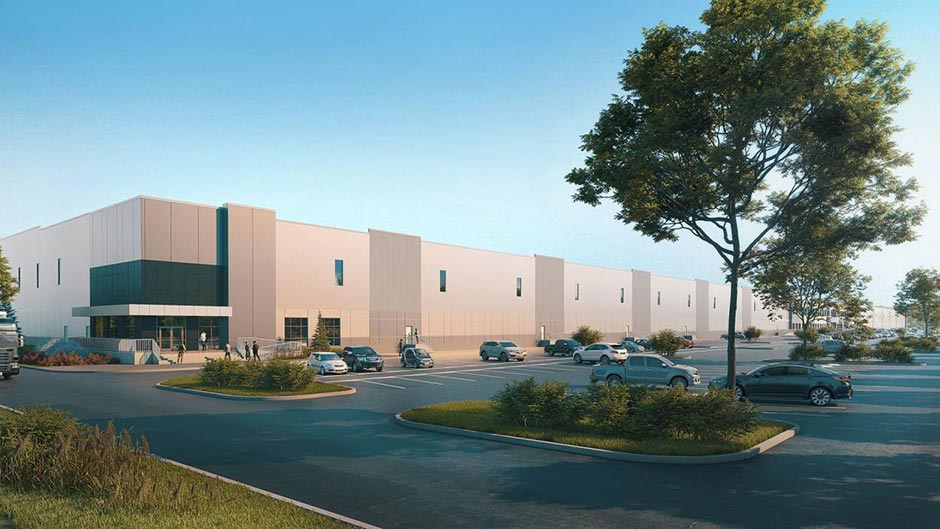
Amazon’s Ottawa Fulfillment Centre (Broccolini Construction)“The fact that this company has been chosen to carry out the very sensitive work of delivering PPEs in Canada is a national disgrace,” said Ryan Lum of the Warehouse Workers Centre.Amazon workers around the world have been speaking out about the company’s working conditions, with workers at a New York warehouse walking off the job and protests at a warehouse in France.
Amazon’s warehouses in Ottawa and Calgary have already seen workers test positive for COVID-19.
The WWC recently launched a petition demanding healthier working conditions in Amazon’s warehouses, charging that the company does not offer paid sick leave and makes it difficult to follow social distancing rules.
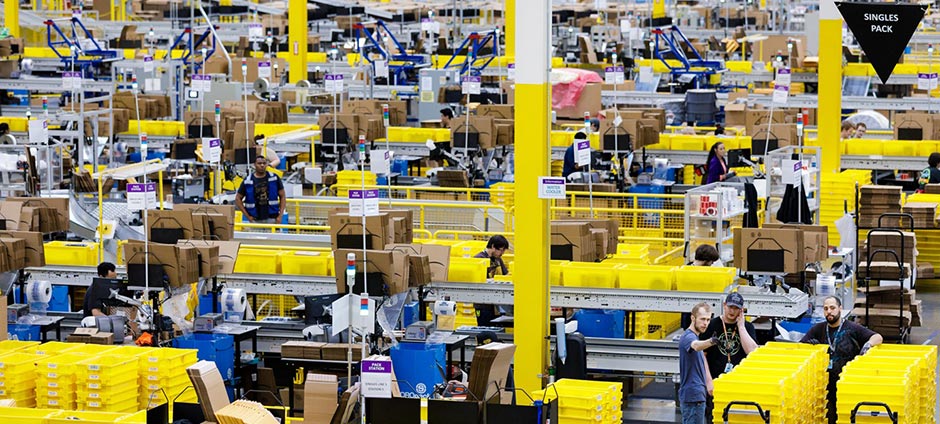
Work floor of a typical Amazon warehouse (J. Stead, Amazon)
Amazon workers who spoke directly to PressProgress said warehouse conditions are “worrying,” adding they “don’t know how transparent the company is being.”
“We saw a positive case in Ottawa,” said Caroline, a worker at Amazon’s warehouse in Bolton, Ontario, which can employ between 2,000 and 3,500 workers. “There’s just so many people in the facility, if an outbreak does happen and a bunch of people catch it, it will be pretty tragic.”
“The population at Amazon skews older,” she said. “The majority of people I’d say are over 50, there’s a lot of people over 60,” some of whom have “diabetes” or are “immunocompromised.”
Amazon told PressProgress they’ve “increased cleaning at all facilities” and “taken extensive measures to ensure the safety of its workforce, in order to comply with all public health requirements.”
Amazon also said the company has “worked closely with health authorities,” though Canada’s public health authorities won’t confirm whether or not that’s true.
In response to a list of questions asking whether PHAC is providing any oversight or inspecting Amazon warehouses that store emergency medical supplies, the agency issued a statement to PressProgress consisting only of “general advice” it gives to all employers on how to clean their workplaces.
The public health agency would not say if it was aware of health and safety issues at any of Amazon’s warehouses where its emergency medical supplies are stored.
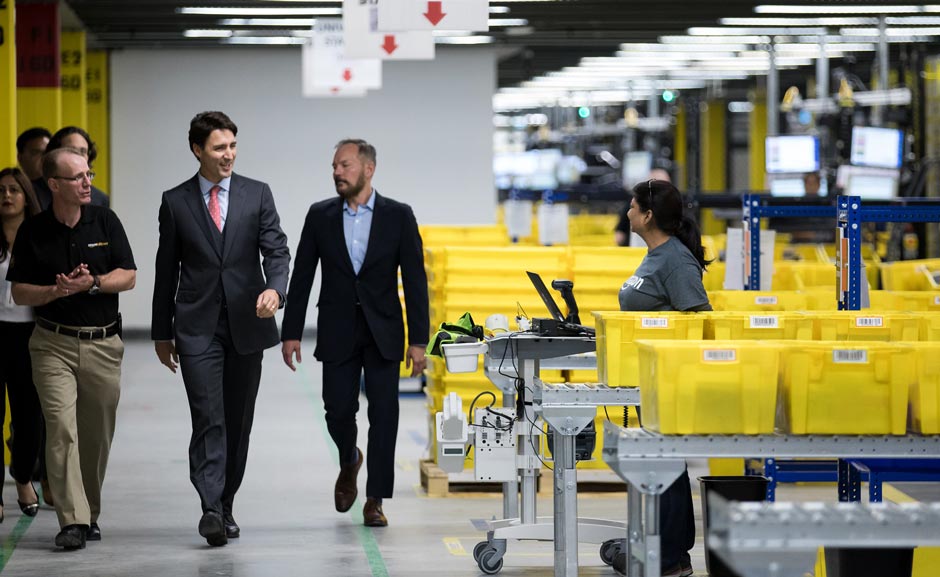
Prime Minister Trudeau tours Amazon’s Brampton warehouse in 2016 (Prime Minister’s Office)Amazon told PressProgress it brought in measures to ensure warehouse workers are “maintaining social distance” at all times, but workers says that’s not entirely true.
“The nature of the work and the way the facilities are designed, they’re designed to pack in as many people as possible,” Caroline told PressProgress.
Although she agrees the company belatedly took steps to promote social distancing, she said that workers are still “inevitably going to be around a lot of people.”
“There could be potentially 10 people in a small aisle,” she noted.
Amazon also told PressProgress the company is “spreading out” workers in its lunchrooms, but Caroline said lunchrooms are “more crowded than comfortable,” with “four or five” workers sharing tables that “typically seat seven or eight.”
“The tables are still kind of kept apart, but then you’ll see more than one person at a table,” she said. “There’s just not enough space for everyone.”
“It’s better than when they were just doing nothing at all at the beginning of the pandemic, before the pressure started to set in, but it’s still a lot of people.”
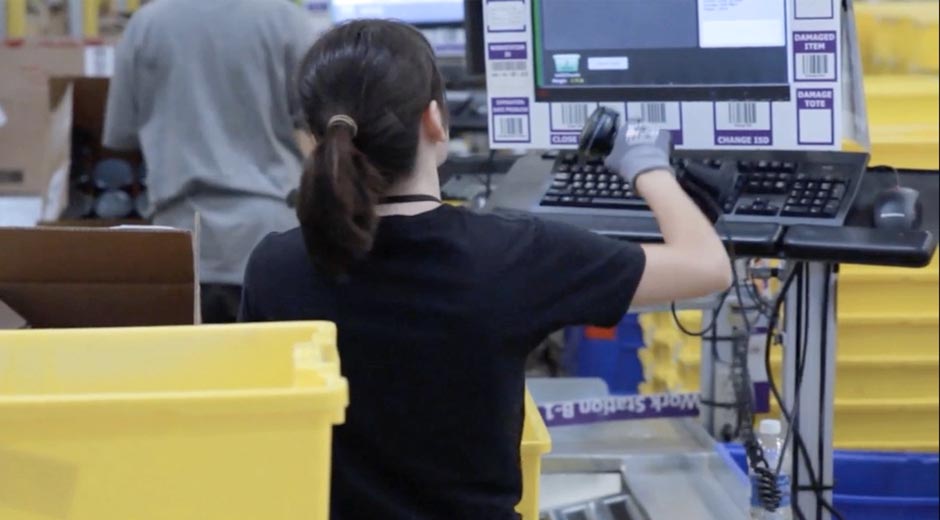
Typical work station at Amazon warehouse in 2016 (Amazon)
Lum said some workers are quitting their jobs rather than risk their health.
“We’ve been in touch with several Amazon workers considered ‘high risk’ who have stopped going into work because they can’t ensure their own safety,” he said
In guidelines for Canadian employers, PHAC lists “relaxing sick leave policies” to “support employees in self-isolating when ill, exposed to cases or returning from international travel” as a “high” priority.
Yet Amazon, which is a PHAC contractor, admits they only offer “up to two weeks” paid sick leave for workers who tested positive for COVID-19, while other workers are allowed to take “unlimited unpaid time off” until the end of April.
“We meet or exceed sick leave policies in every province,” Amazon told PressProgress.
Caroline said workers who test positive need to provide the company with proof that they had COVID-19 or were “asked to quarantine by the government or your doctor, but either way thats only two-week paid leave.”
“If you need to take more than two weeks, it’s got to be a leave of absence that’s unpaid.”
But getting a doctor’s note to prove to your employer that you have COVID-19 could be easier said than done.
“In the case of workers who have been able to get tested, they are not paid if they take time off while they wait for test results, which can take up to a week in most cases,” Lum pointed out.
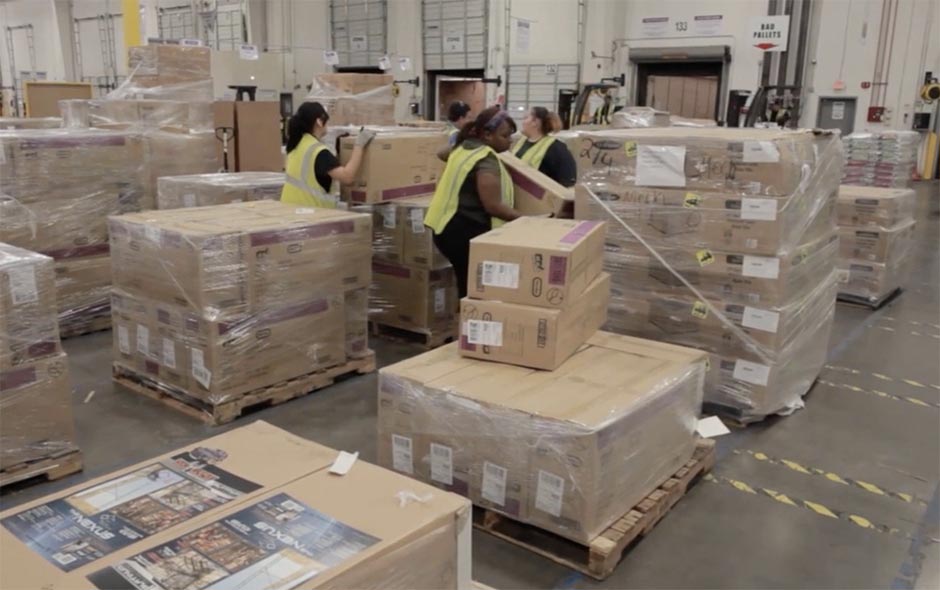
Workers unpacking boxes at Amazon warehouse (Amazon)In a blog post published Friday, Amazon announced it had distributed personal protective gear, including masks, and began implementing “temperature checks” at all facilities worldwide.
Amazon told PressProgress it hadn’t fully distributed medical supplies to its own workers prior to last week.
Editor’s Note: This article quotes an Amazon worker who works at the company’s Bolton, Ontario warehouse. At the worker’s request, PressProgress has used an alias in place of their name in order to protect them from retribution for speaking about conditions at their workplace.
Federal Government Won’t Disclose Details of New Contract With Amazon to Manage Canada’s COVID-19 SuppliesHealthcare advocates ‘very concerned’ federal government privatized management of Canada’s emergency stockpile of disaster supplies
April 15, 2020
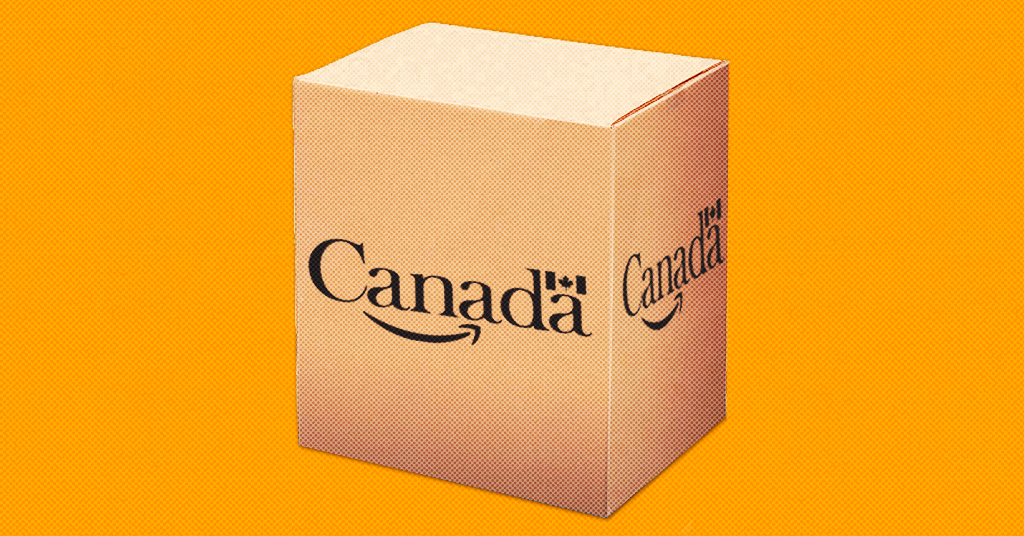
Photo Illustrration: PressProgress (PNG Play, Government of Canada)
The federal government won’t share details of a contract it signed with Amazon this month that puts the multinational corporation in charge of distributing emergency medical supplies to Canadian hospitals during the coronavirus pandemic.
For nearly two weeks, PressProgress has made numerous attempts to get basic details on the record about the federal government’s “partnership” with Amazon.
The federal government’s response has proven slower than shipping a package from Halifax to Vancouver.
On April 3, Prime Minister Justin Trudeau made a surprise announcement revealing Ottawa had “signed an agreement with Amazon Canada to manage the distribution” of medical supplies, including “masks, face shields, gowns, ventilators and test-kits.”
A bit of news that may get overlooked today because of 3M:
PMJT says the federal government is turning to Amazon Canada — not Canada Post or its courier division, Purolator — to deliver PPE and other supplies to health care facilities.— Glen McGregor (@glen_mcgregor) April 3, 2020
The announcement triggered an immediate backlash, with some questioning why the federal government awarded a contract to a multinational corporation when a federal crown corporation like Canada Post could do the job just as easily?
The government scrambled to put out a press release clarifying Canada Post and Purolator will be handling deliveries — in fact, most Amazon home deliveries are already handled by Canada Post and Purolator.
Of course, that raises an even more basic question: What exactly is Amazon doing?
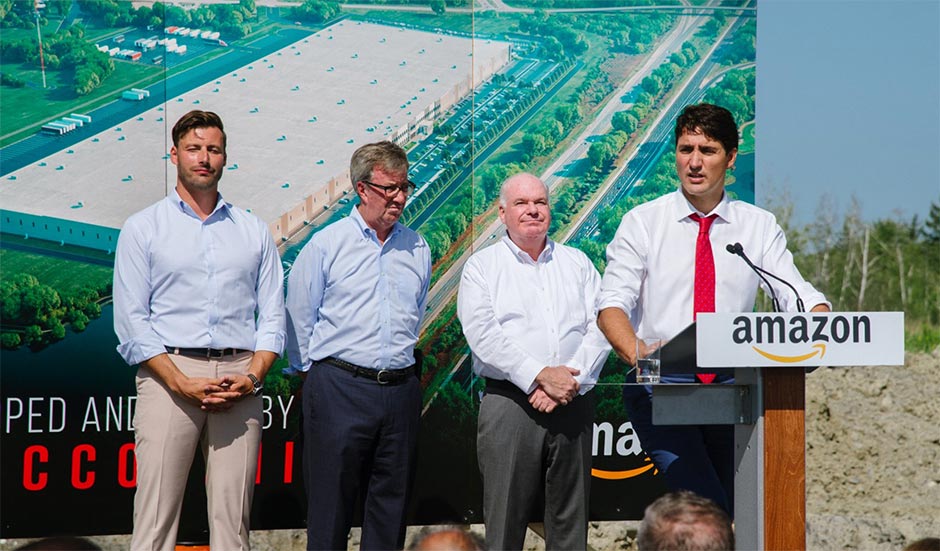
Groundbreaking ceremony for Ottawa’s Amazon fulfillment centre (Jim Watson, Facebook)
The only concrete detail in the government’s press release was that Amazon would “process and manage orders through its online Amazon Business store” — in other words, Amazon was simply creating a helpful webpage.
Public Service and Procurement Canada (PSPC), the department in charge of awarding government contracts, refused to disclose the full terms of Amazon’s contract with the Public Health Agency of Canada (PHAC).
“The contract between the Government of Canada and Amazon contains third party information protected under the Access to Information Act and the Privacy Act,” a PSPC spokesperson told PressProgress.
They pointed to a section allowing the government to “refuse to disclose any record” if it relates to “trade secrets of a third party” or other various “financial” matters.
PSPC would only say that PHAC, the agency leading Canada’s pandemic response, was looking for “options to best manage the shipping, receiving, order processing and distribution of personal protective equipment to healthcare partners.”
However, an Amazon spokesperson told PressProgress about other components of the deal which the federal government has not publicly disclosed — including that the company will store emergency medical supplies at its private warehouses.
“Supplies procured by the Government will be stored at Canada Post warehouses as well as Amazon fulfillment centres,” the Amazon spokesperson clarified.
PHAC initially refused to confirm or deny Amazon’s private warehouses would store medical supplies, suggesting the “locations” of the supplies were confidential.
The agency later confirmed Amazon will, in fact, “provide warehousing.”
PHAC did not provide answers to PressProgress‘ questions about steps the agency is taking to provide oversight or ensure the security of supplies at Amazon’s facilities.
The agency also provided no explanation for why Amazon’s facilities are needed when PHAC already has a network of “hidden” warehouses that are supposed to be used to store medical supplies specifically in case of a pandemic.
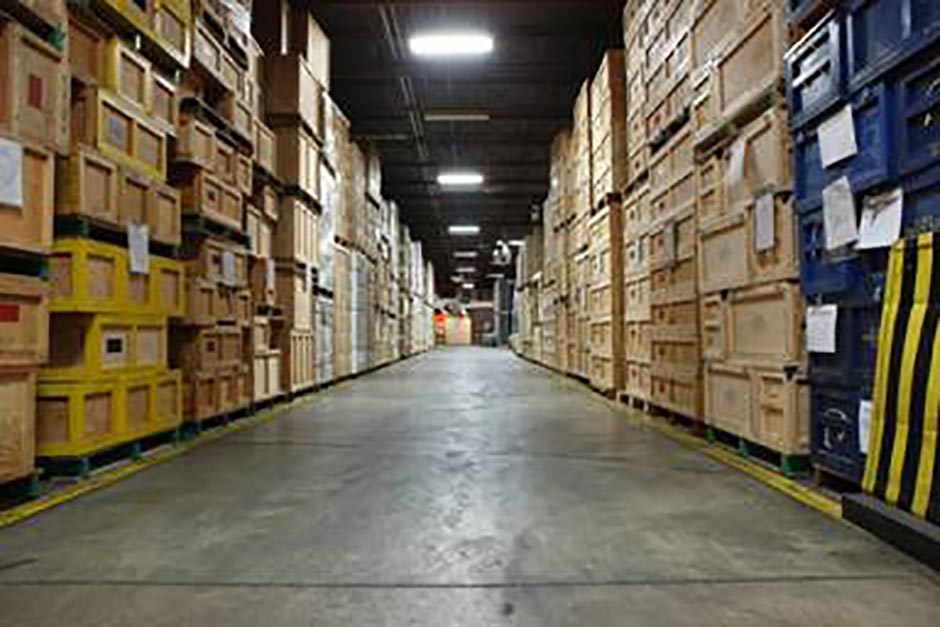
National Emergency Stockpile System warehouse (Public Health Agency of Canada)
YES VIRGINIA THERE IS A REAL PHYSICAL STOCKPILE OF MATERIAL
Through the National Emergency Stockpile System, PHAC maintains 11 federal warehouses and 1,300 supply centres “containing medical equipment and supplies,” including personal protective equipment and ventilators.
A 2006 report on Canada’s pandemic plans authored by Chief Public Health Officer Theresa Tam indicates NESS is in charge of “packaging, shipping and storing of supplies and equipment” and “facilitate (their) timely distribution” — responsibilities that now all appear to be managed in one form or another by Amazon.
Health Minister Patty Hajdu recently acknowledged the emergency stockpile faced underfunding for “decades” under successive governments. As recently as the 2010s, the stockpile contained medical equipment procured in the 1950s originally meant to be used in the event of nuclear war with the Soviet Union.
The Senate of Canada issued a report in 2008 that concluded the program had been mismanaged, noting supplies in the “hidden caches” appeared “more appropriate to the Korean War era than to the needs of first responders today.”
A 2011 program evaluation under the Harper government later floated the idea of cutting costs by privatizing parts of Canada’s stockpile of disaster supplies.
“Third-party-managed inventory,” which involves “leveraging the use of private sector warehouse and inventory management capacity,” is cited as an example of “public-private partnerships” that could result in “improved efficiencies.”
The 2011 report also noted the warehouses were understaffed and under equipped.
“There is a large volume of advanced medical equipment in the NESS warehouse for which there is minimal infrastructure or human resources to support its sophisticated and labour-intensive maintenance,” the report noted.
This week, CBC News reported PHAC threw away two million N95 masks when the Trudeau government shut down a NESS warehouse in Saskatchewan last year.
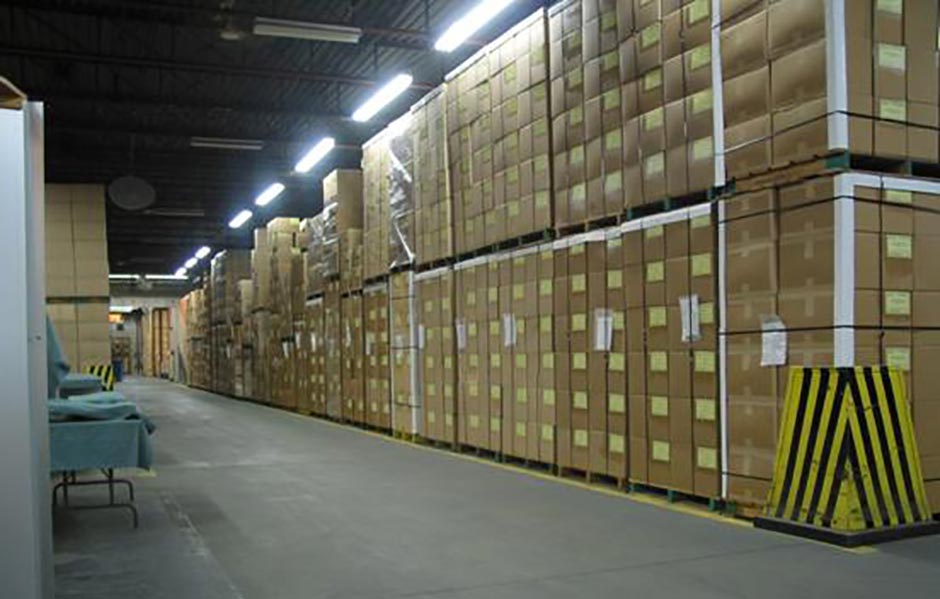
National Emergency Stockpile System warehouse (Public Health Agency of Canada)
YES VIRGINIA THERE IS A REAL PHYSICAL STOCKPILE OF MATERIAL
Healthcare advocates are “very concerned” by what the public-private partnership with Amazon says about Canada’s emergency healthcare capacity.
“This is the privatization of a significant part of the supply chain for necessary emergency supplies that should be controlled publicly and subject to careful oversight and handling,” Ontario Health Coalition Executive Director Natalie Mehra told PressProgress.
“The federal government should answer questions about this with substantive answers,” Mehra added. “Canada should have existing facility stock for storage and distribution.”
“It is not clear to us either that Canada does not have the capacity to do so, or why we could not very quickly have the capacity.”
It’s unclear if the federal government consulted anyone before hiring Amazon. Stakeholders like the Public Health Association of Canada and the Canadian Medical Association told PressProgress they had no information about Amazon’s deal to manage the distribution of emergency medical supplies.
The CMA noted “the supply of personal protective equipment is an urgent issue,” pointing to a recent survey of its member suggesting nearly 90% of orders for new supplies in the last month had yet to arrive.
The Canadian Union of Postal Workers, who also indicated they were not consulted before the contract with Amazon was signed, said they also have “urgent questions and serious concerns about the deal.”
“Oversight is going to be crucial,” said CUPW President Jan Simpson. “How will the public be assured that worker rights are respected the way they should be by a federal contractor?”
---30---
No comments:
Post a Comment